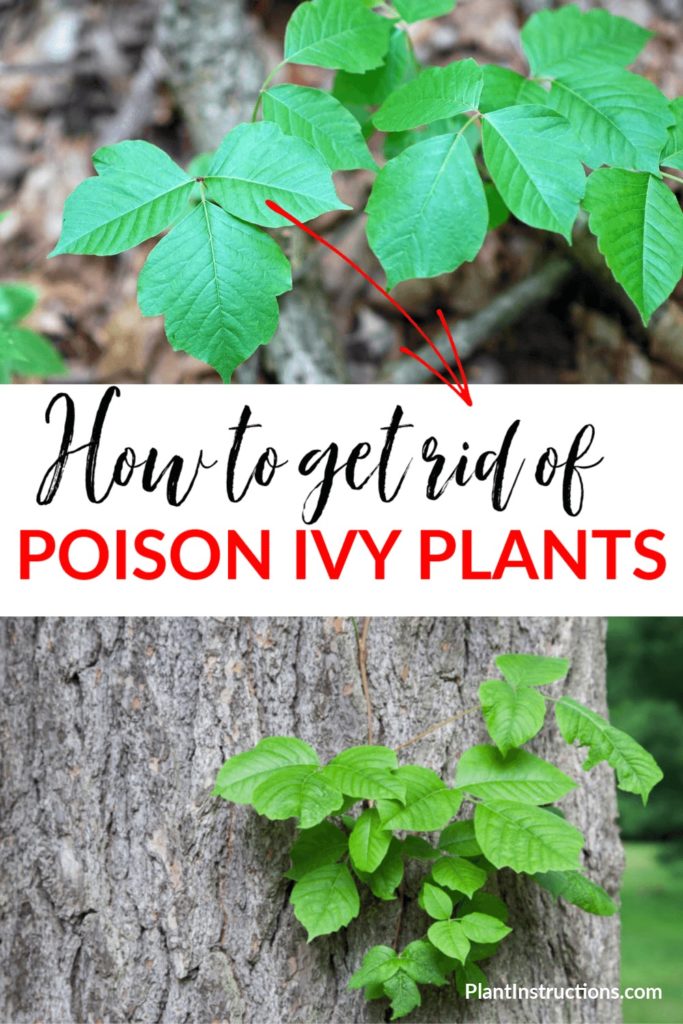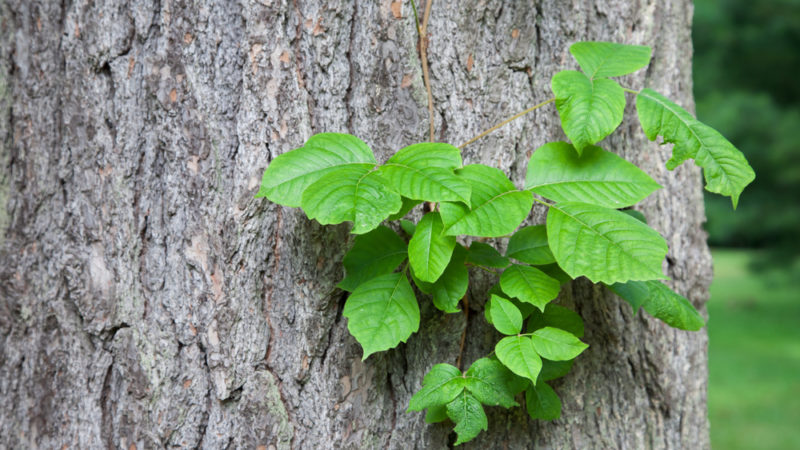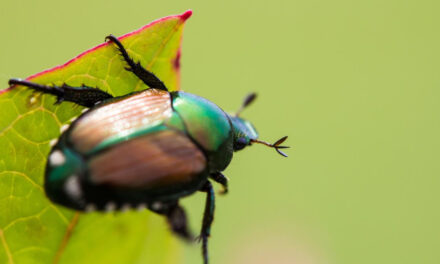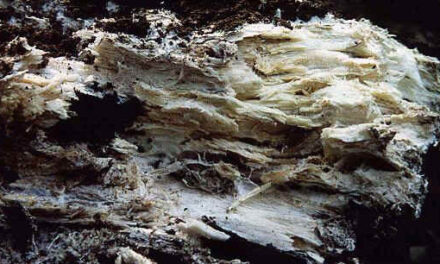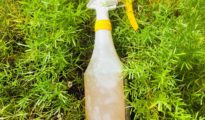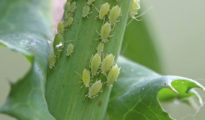Poison ivy is one of, if not the most dangerous plant you can have in your garden, because your kids and family can be affected by this plant. That's why we will tell you what it is, what damage it causes, and how to get rid of poison ivy plants in today's post!

What is Poison Ivy?
Toxicodendron radicans, also known as poison ivy is a poison flowering plant from Asian and Eastern North America.
Poison ivy has a stem with two smaller leaves shooting off the sides and a larger leaf with pointed tips at the end. They can take the form of a shrub or a vine, and the plant appearance can change depending on the environment where it grows and the region. Poison ivy is yellow in the fall, green in the summer, and reddish in the spring.
It's important to learn how to identify poison ivy and prevent future damage.
What Damage Does Poison Ivy Cause?
While poison ivy doesn't cause any damage to your plants, it can be severely poisonous to humans.
Poison ivy can cause an allergic reaction on our skin due to an oily resin known urushiol that can be found in the leaves, roots, and stems of the plant. The oily resin is odorless and colorless which makes it difficult to detect. When the poisonous oily resin touches your skin, it can cause a reaction knows as allergic contact dermatitis.
Another way of getting affected by poison ivy is by breathing the smoke of a burning plant. The smoke can get into your lungs and nasal passages as well as causing an allergic reaction.
How do I know if I have an reaction to poison ivy?
Not everybody is allergic to poison ivy, some people might not even experience any reaction to it at all. There is no way to know for sure unless you have direct contact with the plant, so always be careful.
If you are experiencing redness, itching, blistering and swelling, which are the common symptoms of poison ivy allergies, then you might be having a reaction.
Not every poison ivy reaction needs to be treated by a doctor, because it normally will fade by itself, but if you see that your reaction is severe then try to visit a doctor.
How to Get Rid of Poison Ivy Plants
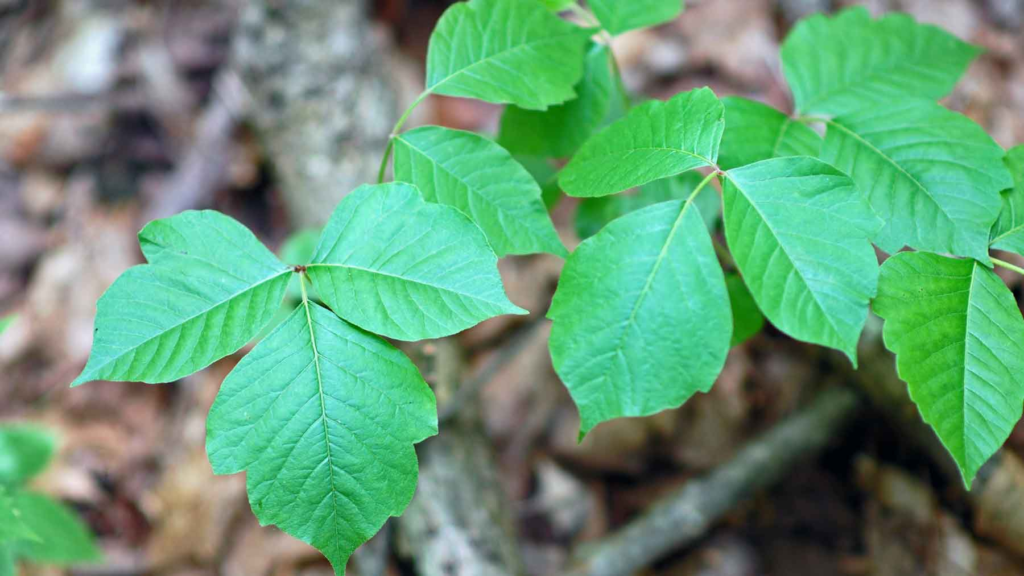
There are many natural and safe ways to get rid of poison ivy plants.
#1. Cutting the Poison Ivy Plant
This method requires you to be extra careful since you will be using your hands and will be close to the plant.
Wear gloves, pants, boots and long sleeves before going intoto any contact with the plant. Make sure that every part of your body is covered. You can use tape to around your ankles to seal the gap between your pants and shoes. If you are digging the plant with your own hands make sure the gloves are thick enough, you can also use a plastic bag to protect each hand over the gloves.
Once your body is secure, go ahead and dig the plant or use a pair of garden shears to cut the plant. After cutting or digging the plant, use a shovel to loosen the soil and dig down to remove any plant root that can grow back.
Once the whole plant is removed dispose of the plant by placing in a plastic bag and putting a label or tag on it for warning. Never burn the poison ivy plant as the smoke can be just as poisonous as the plant oily resin.
Make sure that while doing all the steps, the plant never comes in contact with your skin, because even after removing the plant, it can still be poisonous.
After you have successfully removed and disposed of the poison ivy plant, deeply wash everything you were wearing and the tools you were using.
#2. Use a Homemade Herbicide
There is always a way to go without using chemicals and this one is not the exception. You can get rid of poison ivy by using a DIY kill solution.
Ingredients:
- 1 cup of salt
- 1 gallon of vinegar
- 8 drops of liquid dish soap
- A spray bottle
Directions:
- In a pot, combine the vinegar with the salt and heat until the salt dissolves, then allow it to cool.
- Once dissolved, add the liquid dish soap and mix it well.
- Pour the mixture into a spray bottle and spray the poison ivy making sure it only affects that plant.
- You might have to spray a few times for faster results.
- You can also pour the mixture directly to the plant and wait till it dies.
- Once the plant dies it will turn brown. Dispose of the remain plant using protective clothes.
#3. Use a Chemical Herbicide
If you want faster results and are comfortable with using a non-natural herbicide, here are a few options you can consider using.
Use a herbicide that contains Glyphosate which will penetrate the poison ivy plant and kill it from inside out.
Other strong ingredients in herbicide are triclopyr and 4-D mecoprop dicamba, it will kill ivy faster and any other plant, therefore, be careful to not spray on your regular plants.
Pouring bleach is also another way you can kill the poison ivy plants faster but like every other chemical, you must be careful with your regular plants.
Once the herbicide has killed the plant, proceed to dispose of the plant by placing it in a bag with a labelm and protect your skin during the whole process.
As you already know the most important part of getting rid of poison ivy is to protect your skin from coming into contact with the oily resin. Whatever method you plan to use, take every precaution necessary to avoid damage to your skin.
Getting rid of the ivy plant can be so easy once you have learned the proper way to do it. Follow this guide on how to get rid of poison ivy plants and make your garden safe for everybody!
Like this post? Pin, share and comment below 🙂
